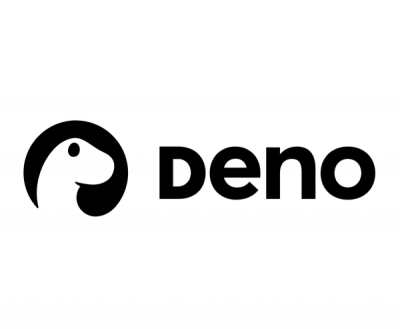
Security News
Deno 2.2 Improves Dependency Management and Expands Node.js Compatibility
Deno 2.2 enhances Node.js compatibility, improves dependency management, adds OpenTelemetry support, and expands linting and task automation for developers.
@gondel/plugin-react
Advanced tools
This tiny plugin bootstraps React widgets and apps using Gondel.
HTML
<div data-g-name="DemoWidget">Loading..</div>
JavaScript
import { GondelReactComponent } from '@gondel/plugin-react';
import { Component } from '@gondel/core';
import { App } from './App';
import React from 'react';
@Component('DemoWidget')
export class DemoWidget extends GondelReactComponent {
render() {
return (
<App />
)
}
}
Most apps need some specific configuration e.g. API enpoints or other settings.
The following pattern allows you to pass a basic configuration from the DOM to your application.
This guarantees us that we have the full flexibility to pass a configuration, so that it can get rendered by anyone (e.g. CMS).
HTML
<div data-g-name="DemoWidget">
<script type="text/json">{ "foo":"bar" }</script>
Loading..
</div>
JavaScript
import { GondelReactComponent } from '@gondel/plugin-react';
import { Component } from '@gondel/core';
import React from 'react';
import { App } from './App';
@Component('DemoWidget')
export class DemoWidget extends GondelReactComponent {
render(config) {
return (
<App config={config} />
)
}
}
It's also possible to link a gondel component to a react component without using a render method.
In the following example below the React app will be bundled into the same bundle (no code splitting).
HTML
<div data-g-name="DemoWidget">
<script type="text/json">{ "foo":"bar" }</script>
Loading..
</div>
JavaScript
import { GondelReactComponent } from '@gondel/plugin-react';
import { Component } from '@gondel/core';
import { App } from './App';
@Component('DemoWidget')
export class DemoWidget extends GondelReactComponent {
App = App;
}
To only lazy load the JavaScript of your React widget if the matching HTML Element is present, you can use the following pattern below which is called lazy linking:
HTML
<div data-g-name="DemoWidget">
<script type="text/json">{ "foo":"bar" }</script>
Loading..
</div>
JavaScript
import { GondelReactComponent } from '@gondel/plugin-react';
import { Component } from '@gondel/core';
const loader = () => import('./App');
@Component('DemoWidget')
export class DemoWidget extends GondelReactComponent.create(loader, "App") {
}
To use a react App with a default export the second parameter of create can be skipped.
import { GondelReactComponent } from '@gondel/plugin-react';
import { Component } from '@gondel/core';
const loader = () => import('./App');
@Component('DemoWidget')
export class DemoWidget extends GondelReactComponent.create(loader) {
}
Initially the state is load from the script tag inside the components HTML markup.
In the following example below, Gondel would extract the initial state { theme: 'light' }:
<div data-g-name="DemoWidget">
<script type="text/json">{ "theme":"light" }</script>
Loading..
</div>
This initial state can be accessed inside the GondelReactComponent using this.state.
It is even possible to update the state of the component by calling the method this.setState(...):
import React from 'react';
import { GondelReactComponent } from '@gondel/plugin-react';
import { Component } from '@gondel/core';
const DemoApp = ({ theme }: {theme: 'light' | 'dark'}) => (
<h1 className={theme === 'dark' ? 'dark' : 'light'}>
Hello World
</h1>
);
@Component('DemoWidget')
export class DemoWidget extends GondelReactComponent.create(() => DemoApp) {
setTheme(theme: 'light' | 'dark') {
this.setState({ theme });
}
}
In the example above we've created a public setTheme method which is now a public API for your React widget.
In combination with getComponentByDomNode it allows changing the state during runtime by external components:
getComponentByDomNode(domElement).setTheme('dark')
The useGondelComponent hook allows us to use a Gondel UI component like an accordion or button inside a React app.
This can be really handy if you want to interop with your existing component markup inside of React.
import { useGondelComponent } from '@gondel/plugin-react';
const Button = (props) => {
const [ref] = useGondelComponent();
return (
<button ref={ref} data-g-name="Button"></button>
);
};
In addition to the ref object, an instance of the Gondel component gets returned.
This allows to fully control the Gondel component from the React code.
React component
import { useGondelComponent } from '@gondel/plugin-react';
const Button = (props) => {
const [ref, gondelButtonInstance] = useGondelComponent();
return (
<button
ref={ref}
data-g-name="Button"
onClick={() => {
// Ensure that the gondelInstance is already initialized
if (gondelButtonInstance) {
// Execute a class method from the Gondel component
gondelButtonInstance.setIsEnabled(false);
}
}}>
Button text
</button>
);
};
Gondel component
import { Component, GondelBaseComponent } from '@gondel/core';
@Component('Button')
export class Button extends GondelBaseComponent {
setIsEnabled(newState) {
if (newState) {
this._ctx.removeAttribute('disabled');
} else {
this._ctx.setAttribute('disabled');
}
}
}
FAQs
Gondel Plugin to boot react widgets and apps
The npm package @gondel/plugin-react receives a total of 249 weekly downloads. As such, @gondel/plugin-react popularity was classified as not popular.
We found that @gondel/plugin-react demonstrated a not healthy version release cadence and project activity because the last version was released a year ago. It has 3 open source maintainers collaborating on the project.
Did you know?

Socket for GitHub automatically highlights issues in each pull request and monitors the health of all your open source dependencies. Discover the contents of your packages and block harmful activity before you install or update your dependencies.

Security News
Deno 2.2 enhances Node.js compatibility, improves dependency management, adds OpenTelemetry support, and expands linting and task automation for developers.

Security News
React's CRA deprecation announcement sparked community criticism over framework recommendations, leading to quick updates acknowledging build tools like Vite as valid alternatives.

Security News
Ransomware payment rates hit an all-time low in 2024 as law enforcement crackdowns, stronger defenses, and shifting policies make attacks riskier and less profitable.